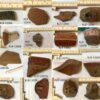Women researchers received substantially less funding in grant awards than men—an average of about $342,000 compared to men’s $659,000, according to a large meta-analysis of studies on the topic.
Women were also less likely to receive second grants to continue their research. In first-time grant applications, proportional numbers of women and men scientists were approved for funding, but for re-applications, 9% fewer women who applied were approved than their male peers.
These gaps are real barriers to women’s long-term success in research and a problem for science itself, said lead author Karen Schmaling, psychology professor at Washington State University, Vancouver.
“Diversity tends to be associated with creativity and scientific progress,” said Schmaling. “If the genders aren’t well-represented—and all the intersectionality of race, ethnicity and nationality alongside gender—then science might indeed suffer.”
For the meta-analysis published in the journal Research Integrity and Peer Review, Schmaling and co-author Stephen Gallo of the American Institute of Biological Sciences analyzed data from 55 studies on grant awards published between 2005 and 2020. This represents data on more than 1.3 million applications worldwide although the majority were in the U.S. and Europe.
While more than half the world’s population, women are still underrepresented in scientific research. This analysis found that women made-up only 36% of eligible applicants to grants, and only 30% actually applied.
Men also typically requested more funding than women applicants. However, the authors note that in two of the studies where there was no gender difference in the amount requested, the women researchers still received less, showing what Schmaling called an apparent “discounting of women’s science.”
The analysis also found that Europe was more friendly to women scientists, granting about 6% more awards to women researchers than funding agencies did in the U.S. The authors said this likely reflects the United States’ low standing in gender equality, ranking 53 among 153 nations, as well as many European countries’ pro-active gender equity policies.
The findings indicate a need to reevaluate the granting process itself, including the composition of review committees and the way they approve applications.
“Many funding agencies value what’s called ‘bibliometric measures’ of someone’s success, such as how many papers they’ve published and how many people cited those papers,” said Gallo. “Those measures are deeply biased and flawed, and don’t necessarily reflect differences in scientific excellence. It might be time to move away from them.”
Past studies have shown that men tend to cite studies authored by other male researchers more frequently than those by women researchers and that they “self-cite” more often than women, meaning they reference their past work in new studies, helping to drive up their citation numbers.
These types of things help entrench an already unbalanced system, and supporting women scientists throughout their careers is key to fixing this imbalance, Schmaling said.
“It starts really early with all these opportunities that are just less frequently extended to women,” she said. “If we want true change, especially in the U.S., we need think about being more encouraging and giving opportunities to young women scientists early in their career—and before, when they are students.”
More information:
Karen B. Schmaling et al, Gender differences in peer reviewed grant applications, awards, and amounts: a systematic review and meta-analysis, Research Integrity and Peer Review (2023). DOI: 10.1186/s41073-023-00127-3
Provided by
Washington State University
Citation:
Gender gap found in research grant award amounts, re-applications (2023, May 3)



